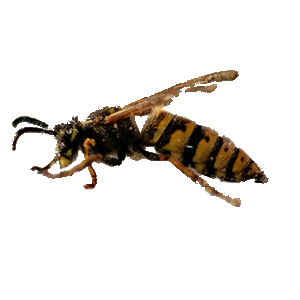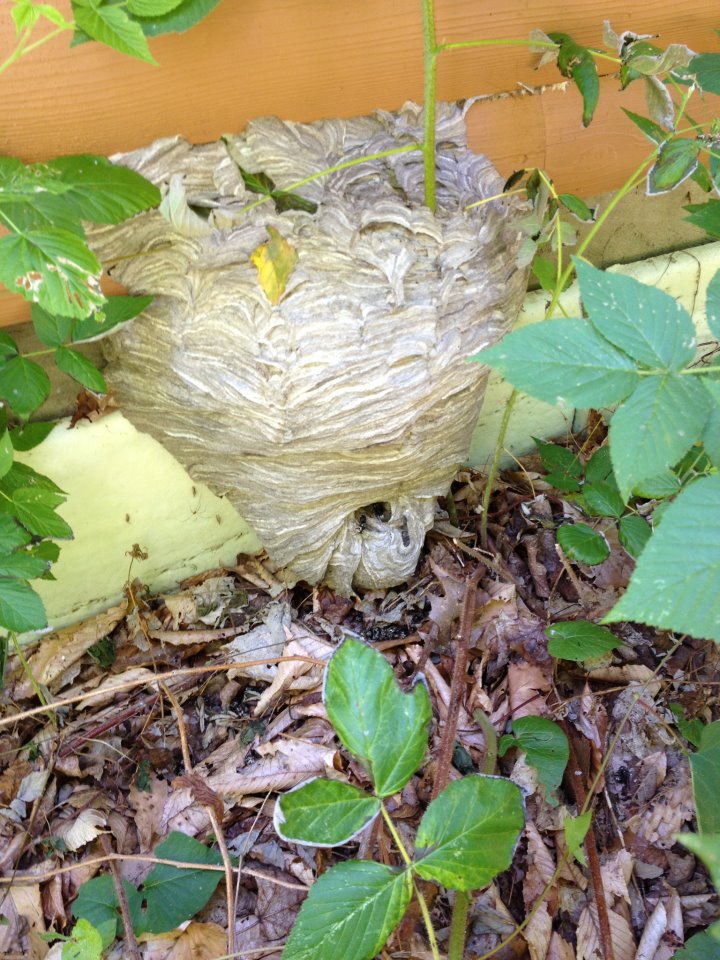We want to save the bees, but keep them away from ourselves and our loved ones, right? Approximately 86 people die from run-in’s with these insects every year, typically from anaphylaxis which is commonly associated with an allergy. All bee species in Michigan are considered important pollinators, as they fly from flower to flower spreading pollen, so it is illegal to kill some species. Removal and control are the best methods to combat a bee infestation.
Bees make their hives in anything hollow; including tree stumps and unfortunately the walls of our homes or other structures. They are disturbed whenever the structure in which their hive is built is disturbed; the vibrations from any outside movement cause the bees to become very unhappy, and in many cases this is when stings occur. That being said, There are 3 main types of bees in Michigan, and it is important to know which ones you are dealing with in the event you notice them buzzing around your homes and/or structures this summer.
Bumble bees
Bumble bees are large insects that are black and yellow in color with a seemingly fuzzy appearance. There are 15-
Carpenter bees
Carpenter bees are large insects whose life only spans up to one year. Females rarely sting and males completely lack the ability to, so they are not considered dangerous. True to their name, these bees bore into raw wood, such as deck timbers, especially if it’s weathered or has starter holes. As a result, this can cause severe damage to log and wood-sided structures. Contrary to popular belief, these bees do not eat the wood, they simply hollow out and live in it. Nectar from flowering plants is their main food source; so, like other native bees, carpenter bees are important plant pollinators, thriving in gardens and in some crops.
Honey bees
Honeybees are one of the more popular bees, despite representing only a small percent of bee species. They measure at about 15mm in length and range anywhere from golden yellow to black in color. They make their hives in anything hollow, such as tree stumps damaged by carpenter ants or inside of the walls of home or frequented structures can become damaged over time as the hive grows and is filled with honey. Honey is a sweet and viscous food substance derived from plants that serves various purposes to humans. Honey not only contains some nutrients and antioxidants, but is considered to be a “less bad” alternative to white sugar and is low in cholesterol! The bees make honey as a food source for the winter months, so even experienced bee keepers must be careful as to how much honey they harvest from hives to sell.
During their mating season in the spring months, honey bees swarm which can cause quite a disturbance to customers. A honey bee stinger is barbed, so it is unable to remove the stinger upon stinging a person. They rupture their abdomen in an attempt to get away, which not only leaves behind the stinger but also part of its abdomen and digestive tract, plus muscles and nerves. This kills the bee, making the honey bee the only bee to die after stinging.
It is important to know that these bees are extremely beneficial and protected federally; so, it is illegal to kill them. Eradication must include the help of a licensed beekeeper, of which we have a couple to recommend.
Benefits of honey bees include:
- Pollination
- Honeybees are among the most popular of all the pollinators. They are an integral part of our ecosystem!
- Honey
- Honey has been used by humans for millions of years. It is not only a healthier alternative to white sugar but tastes wonderful on its own!
- Beeswax
- Used for candles and beauty products
- Royal jelly, propolis and bee pollen
- All of which have medicinal benefits
It is important to know that certain predatory wasps are commonly misidentified as bees. The yellow jacket, despite its black and yellow thorax, is in fact a wasp. Due to their intense aggression and ability to chase and sting victims, bees have gotten a bad reputation amongst people. We will discuss yellow jackets at length on a later date, but it is important to know that there is a difference upon discovering a hive. Bees, for the most part, just enjoy flying around mind their own while stimulating the ecosystem as they go.
Proper handling is important when dealing with any sort of bee or their hive, so it is important to call a licensed pest control professional. We have been keeping properties free of bees in Northern Michigan for 25 years, so don’t hesitate to reach out to us today!
 Bees, wasps, yellow jackets and hornets are one of the most common pest control issues we deal with at Hogarth’s Pest Control. Stinging insects are often unwelcome summer guests, nesting on homes, in trees, under decks and even underground. Though all stinging insects have multiple similarities, each have individual qualities that differentiate them.
Bees, wasps, yellow jackets and hornets are one of the most common pest control issues we deal with at Hogarth’s Pest Control. Stinging insects are often unwelcome summer guests, nesting on homes, in trees, under decks and even underground. Though all stinging insects have multiple similarities, each have individual qualities that differentiate them.